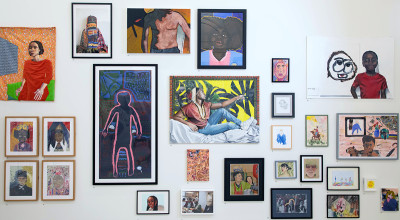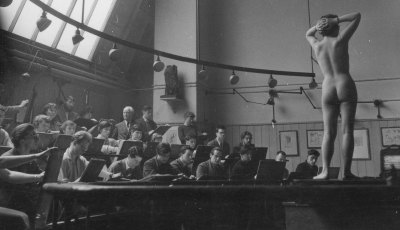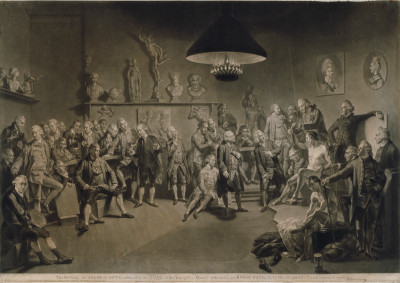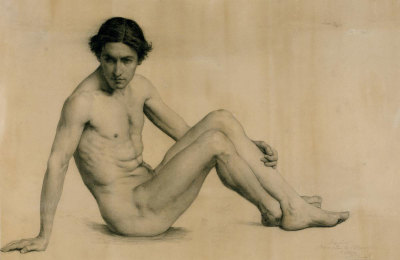Was Joseph Cornell an outsider artist?
Was Joseph Cornell an outsider artist?
By Amy Bluett
Published 8 July 2015
An avid collector who defied categorisation and never spent a night away from home, Cornell also exhibited with the biggest names of his day. So what makes an artist an outsider artist? Five experts discuss.
-
Joseph Cornell has sometimes been called an “outsider” – but does his status as an artist actually fall into the Outsider Art category? Cornell’s personal character could be considered eccentric, and his urge to collect and reluctance to sell his artwork is resonate of those artists we do find under the outsider art banner. Yet he was fully engaged in the professional art world of his day: he exhibited at the same galleries as the Surrealists during the late 1930s and ‘40s, and the Abstract Expressionists during the ‘50s. He also befriended artists such as Marcel Duchamp and Robert Motherwell, and a visit to his home in Queens, New York was seen as something of an art world trophy. Today, his work sells for millions of dollars on the art market and he is recognised as one of the world’s most celebrated assemblage artists. But does his engagement in the professional art world and his success within it immediately exclude him from the outsider genre? What criteria can (or should) we apply to this ambiguous genre, if it even exists?
We asked the panel of our upcoming debate on the subject to consider this question, alongside exhibition curator Sarah Lea. Here’s what they said.
-
Marc Steene, director of Pallant House Gallery
Outsider Art is a much contested term without any clear accepted definition in the academic, commercial or museum worlds. We have to consider carefully labelling artists and their work as “outsider” and seeking to establish a collective for a group of artists who have little in common apart from their mental health, life circumstance or avoidance of any formal art training. To me it seems that we should instead be fighting for the rights of the individual and their entitlement to be creative in whatever way best suits them. Creating ghettos and labels is always dangerous and defining art and artists by their life narratives as opposed to their work is dangerously reductive.
-
Defining artists by their life narratives as opposed to their work is dangerously reductive.
Marc Steene
-
Ian Sherman, artist
The term “outsider artists” and the associated research originally included those who were inherently visually creative, usually with a strong psychological element. They were associated with being denied education, facing prejudice, poor health and isolation. Joseph Cornell was probably unaware of this surpressed genre but seems partially to be in its direction. His persistence with a then unlikely art form, no art school training or big ego, and his making of highly personal items where selling became irrelevant speak to this. Uncharacteristically, he also had the facility to make contact with influential art world figures without undue compromises.
-
John Maizels, editor of Raw Vision
Cornell was not an outsider artist. An outsider artist is by definition outside the art world, he was not. There are quite a few examples of unusual, reclusive, eccentric professional artists and I see him like that – a bit like Morris Louis, for example.
-
There are examples of unusual, reclusive professional artists and I see him like that.
John Maizels
-
Thomas Roeske, director of the Prinzhorn Collection
The question is interesting, even if mainly from the perspective of the art establishment. Within the last few years, outsider art has become so prominent in Europe and the USA that it seems appropriate now to place this label onto art which hardly raised respective suspicions in the decades before. The opposite: for a long time, it seemed to be degrading to use this term, even for works which can be seen as being “on the edge”. Telling for the past attitude is the case of Tichý. At the beginning, around 1990, his work was put on the market as “Outsider photography” and he was named Mirek Tichý. When it became more prominent its promotors changed the label to “conceptual photography” and from then on only used his full first name Miroslav.
-
Cornell's attitude was profoundly non-elitist.
Sarah Lea, curator
-
Sarah Lea, curator of Joseph Cornell: Wanderlust
Joseph Cornell didn’t like to call himself an artist, he preferred to think of himself as a “maker”, working in the amateur tradition. Indeed, the Victorian mix of play and education that characterised his childhood was as formative an influence on his art as Surrealism, as he notes in a letter to Dorothea Tanning displayed in the exhibition, who is just one of many kindred spirits he was in contact with. I think his attitude was profoundly non-elitist – he wanted to make work that was accessible to anyone, whether they were versed in the language of the professional art world, as he so clearly was, or not. What makes him so ahead of his time is that he didn’t perceive boundaries between disciplines or artistic media. The breadth and depth of his interests surpass the limited category of art and he, like his works, remains unclassifiable.
What do you think? Share your view below, join the debate on Twitter using @royalacademy and #JosephCornell or book a place for the panel discussion, Provocations in Art, on 24 July.
Amy Bluett is the RA’s Events and Lectures Co-ordinator.



